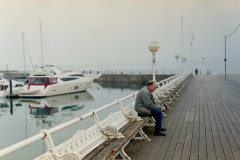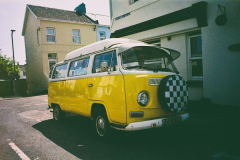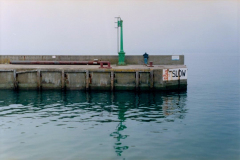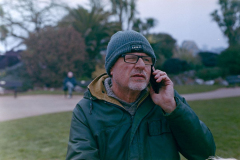The word on the street is that digital cameras using CCD (Charge Coupled Device) sensors can produce results close to those of film cameras. Well, that’s what they say and in this article I’m going to explore the output from three CCD sensor cameras from around 2005. Interested? Read on!
But hold on, before we start I want to ask you a question. Is the header image for this article taken with film, using a modern CMOS digital camera or taken using a vintage CCD camera? I’ll leave you to ponder that question for now but we will return to the answer a little later.
So, just what is CCD technology?
A charge-coupled device (CCD) is an integrated circuit containing an array of linked, or coupled, capacitors. Under the control of an external circuit, each capacitor can transfer its electric charge to a neighboring capacitor. As such, CCD sensors were (and still are) a major technology used in digital imaging.
CCD technology has been around for decades. The first documented use of a CCD array used in a camera was in 1975. Stephen Sasson, an engineer with Kodak, built the first camera to feature a CCD sensor using stuff lying around the workshops. Then in August 1981, Sony presented the Sony “Mavica” (magnetic still video camera) which used a color striped 2/3” format CCD sensor with 280K pixels. However, it was only at Photokina 1988 that Fujifilm introduced the FUJIX DS-1P, the first fully digital camera, which recorded digital images using a semiconductor memory card. This had a capacity of 28 MB of SRAM (static random-access memory) and could hold up to ten photographs. Just a year later, Fujifilm released the FUJIX DS-X, which was the first fully digital camera to be commercially released to an expectant world. From that moment on, CCD technology entered the mainstream camera market and soon, every major camera manufacturer, and some that just made electronics equipment such as watches and calculators, had all jumped on the newest and greatest advance in photography for over five decades.
And boy, did the market explode. If you do a search today on Ebay you will find some 10,000+ results for CCD cameras that go back to the beginning of the new century! That’s a lot of cameras still available today. Even more interestingly, many are small compact devices rather than being based on the design of larger SLR’s. There are of course variants of the SLR design, all predominantly using APS-C sensor sizes which catered for the prosumer and professional user. Nikon SLR bodies such as the D200 for example were often used as the basis for camera models from other manufacturers, for example Kodak and Pentax.
You can learn more about CCD history and usage by visiting Wikipedia or doing your own research.
So the question for today is, can a CCD sensor be as good as film?
The $64,000 question!
The immediate problem we need to overcome is that the nuances of film are really difficult to mimic. It has unique characteristics and the results can look very different depending on the device used to capture the image, the film emulsion, the film base, and not least, the variability associated with the processing of the end result, whether that be digitising the negative or making a print. None of these variables exist for digital imagary because for the most part we work with RAW files and these are pretty much the perfect start point for any future processing activity. Basically then, film is hugely variable. It varies from maker to maker, brand to brand, even batch to batch in some cases.
So, before we get into this subject, let’s take a look at some examples of colour film that I have taken and developed recently. The film stocks were varied, including Fujifilm Reala 100, Fujifilm Xtra 400 and Koday ColorPlus 200 so a variety of emulsions. I also used a variety of cameras from a Pentax Espio 928 Point & Shoot through to a Nikon 801s SLR The common factors are that all were processed in C-41 chemistry and digitised using a Nikon D600 with a Tamron 90mm f2.8 1:1 Macro lens.
Fujifilm, the Masters of colour science
Against all of this variablity, how then can digital technology hope to emulate the nuances of film? Well, let’s step away from the concept of CCD technology for a moment.
Fujifilm are one company of the modern age that have taken on the mantle of trying to bring film simulations to todays photographers.Their stunning range of X-mount cameras, which includes the x-Pro range are exceptional in terms of their ability to manipulate colour science. This is no doubt based on the fact that Fujifilm created some of the best 35mm and 120 film stocks the world has ever known. Brands such as Superia 100, Reala 100, Pro 400H and many more are even today sought after by film photographers the world over. The fact that you can now pay close to £20 a roll for Fujifilm Pro 400H gives you some idea of it’s continued popularity. Even so, at best digital manipulation can only get you so far, irrespective of how good it is plus you’ll have to fork out substantial amounts of cash to own the latest and greatest. There has to be a better way!
Here’s a quick example of what the Fujifilm x-T1, a digital camera with a modern CMOS sensor, albeit that it’s about 8 years old now, can achieve SOOC.
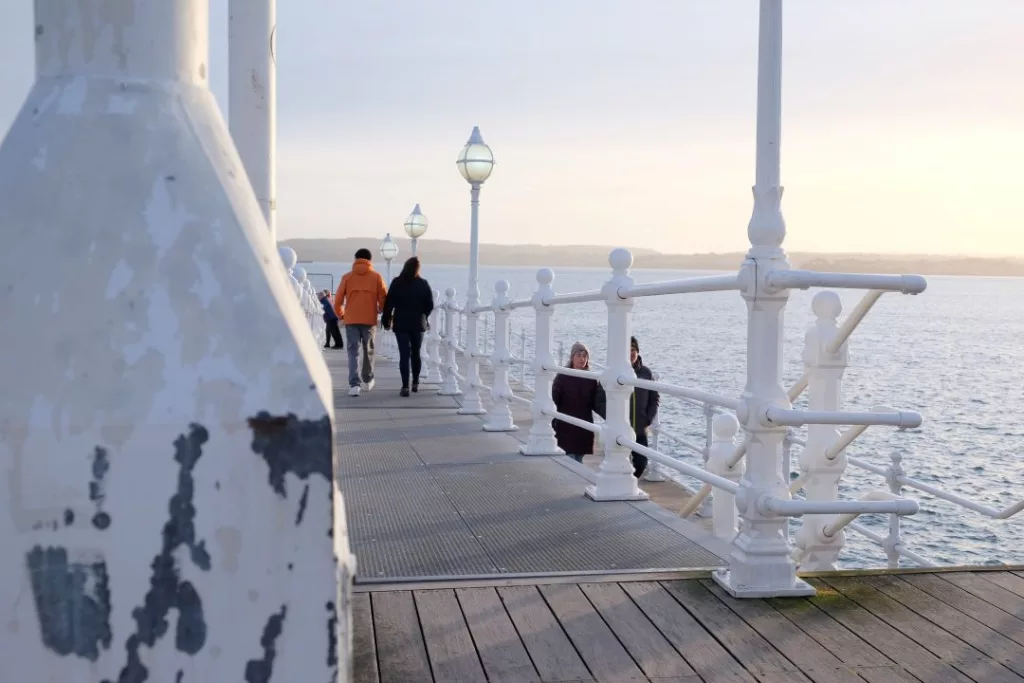
I’ve chosen the Fujifilm x-T1 here because it’s the only Fuji I own but more importantly, it does allow manipulation of the JPEG parameters to “close in” on a filmic look. There are however better cameras in the Fujifilm range, well practically any of the latest range of cameras would be a better choice but the x-T1 can produce remarkably good results in my opinion.
With regards to the image above, from my persepctive the colours and tones are very close to what I see in film i.e. chalky whites amd subtle blues. The main difference between a film emulation and actual film for me though is how the camera handles highlights, especially when the sun is very close to being on screen or is affecting the light. Whereas digital camera tend to burn out highlights in such situations film is very tolerent. You can just see the image starting to lose it on the RHS side of the image.
Let’s look at some Cameras using Charge-coupled Devices
To gather data and images I am going to be using three vintage CCD cameras. These are:
- Casio Exilim EX-Z750
- Nikon CoolPix E7600
- Olympus Camedia C-765
Why these cameras? Well, as I mentioned earlier I just happen to own these three but more importantly, they seem to be pretty representative of the market at around 2005 and so they should offer the opportunity to validate or otherwise the claim that CCD cameras are indeed the next best thing to film.
The Casio Exilim EX-Z750

My device, purchased on Ebay recently is beaten up a lot more than I expected – buyer beware – yet performs extraordinarily well despite its hang-dog looks. This camera cost me £33 with delivery and included a CASIO NP-40 battery, CA-26 docking cradle, PSU, SD card and a natty red textile carry case. It’s quick, has pretty much everything you need to take great photos plus it is only slightly bigger than a credit card although somewhat thicker of course in order to accomodate the zoom lens.
With regards to usage, this camera is also probably the best street camera you could ask for as no one sees you with it. It’s like a stealth bomber. It’s fast to start up, has loads of valuable options and features for pro-photographers and best of all, it takes really great pictures. Here’s one from the weekend that has really good filmic qualities. This jpeg is SOOC!

Does every photo look like this? No, they don’t. Some look like digital images from a modern CMOS camera. However many, this one included, have a real filmic quality because of the subject, the way that the camera is set-up, the light conditions and the way that the photo was composed and shot. For me, the wider you go the less the end results look like film. Shoot tight, and things start to change in the favour of film.
To give you a better idea of the settings for this shot, I used the following
- Saturation +2
- Sharpness -1
- Contrast +2
Here’s a short album of shots from the Casio Exilim EX-Z750.
For me personally, there is a strong filmic vibe to these images which gives me the impression that they were taken on film rather than using a digital camera. And let’s not forget, this thing is tiny, practically credit card sized so doubly amazing what it’s able to deliver.
Here’s a single image that I have processed using an ON1 preset to emulate Kodak Ektar 100 just to show what can be achieved in post.

The Nikon Coolpix E7600

Again purchased recently on Ebay, this one was to replace a lost Nikon E7600 that I last used in 2012. I hadn’t thought much about this camera in the past 11 years or so until a friend of mine, Mark Adams contacted me to say that he’d started a facebook group focused on CCD cameras. You can visit this group at https://www.facebook.com/groups/ccdsensorphotographygroup if you are interested.
Being a sucker for anything that might emulate film I remembered some photos from a trip to Egypt where I’d used the little Nikon E7600. Being unable to find that camera I simply went on to Ebay and bought one for £23 with delivery. It came with a 1GB SD card and since it just uses LR44 Alkaline batteries which we all have lying about the house I was up and running in seconds.
The results from this camera are a mixed bag. Sometime I thnk, blimey, these are really filmic in nature and other times I feel let down and disapointed. Overall I think that they are less pleasing to the eye than for the Exilim EX-Z750 but that could be down to the fact that camera keeps losing the Vivid settings I want and need. Like many of the images below, they can and do look very filmic but all seem to benefit from increased contrast and colour.
Overall though, not bad though for a £20 camera that’s probably about 16 years old.
Let’s take a look at some images from the Nikon Coolpix E7600
The Olympus Camedia C-765 Ultra Zoom
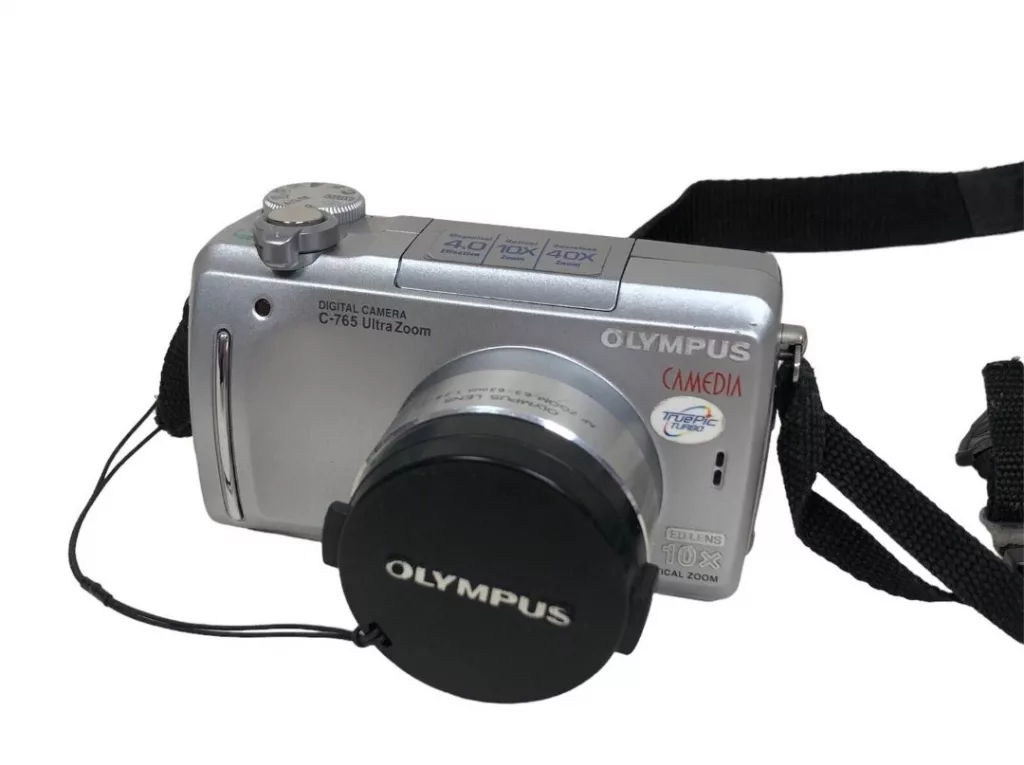
The Olympus C-765 is a seriously good camera in any decade never mind back in 2004 when it was first released.
Featuring a 4MP CCD sensor the C-765 shoots way above the lowely price that you have to pay today to won one. I bought mine for just £20 on Ebay complete with 1GB XD card and a Universal Charger. If I lost this camera tomorrow, I’d be straight on Ebay trying to find another one as soon as possible!
Firstly, it produces excellent images across the whole focal range from 38mm all the way up to it’s maximum zoom of 380mm in 35mm terms. Yes, I kid you not, this camera does it all and it does it well. At the wide end the images are crisp and clean with a feel of a good quality SLR film camera. At the long end they are crisp and clear and full of detail. I’m not trying to tell you that this camera will outshine your Canon 5D with a 100 – 500 lens but in many cases, it will give it a run for it’s money. And let’s not forget, it cost me just £20.
Secondly, the C-765 offers P, A, S and M modes as well as the expected auto mode for point and shoot simplicity as well as modes for landscape and portraiture, night shooting etc. It’s also tiny, and while it is bigger thab either of the Nikon E7600 or Casio Exilim ex-z750 discussed above, it will still (just) fit in a trouser pocket and will certainly in a coat pocket.
One thing I love about this camera is the fact that all of the optical zooming is done within the barrel of the lens. It extends about 1″ (25mm) when powered up and that’s it. It doesn’t change thereafter, you can be at 38mm or 380mm, it’s all the same. In truth I would have loved it to have been slightly wider at 28mm but you can’t have everything. The 10x optical zoom is worth every penny of the £20 I paid!
Oh, did I mention it also has a 40x total zoom although TBH I haven’t used it all at that limit all so far.
So, without further ado, here are some sample shots from the Olympus Camedia C765 Ultra Zoom.
At the beginning of this article I asked if the header image was taken on 35mm film, using a CCD camera or using a modern CMOS digital camera. To remind you, here’s the image

Well, the answer is that it was taken using the Nikon D200 which has a Sony CCD sensor. Did you get it right? If yes, well done. If not, you can generally tell film from digital by how the highlights have been handled. Film is very hard to overexpose whereas digital burns out easily in strong highlights.
In Conclusion
In truth I am amazed at how close to film CCD sensor cameras can get. The images presented here, other than a bit of cropping here and there, are straight out of camera (SOOC) and so give you a fair idea of just what you can expect to achieve using CCD based cameras.
Now I can’t in all honesty say that every image I took looks like film. They don’t. The most filmic images tend to be close in, where the camera is shooting, in the case of all three of the cameras I was using, at f2.8. This created sufficent depth of focus in the image to create a more filmic quality. Where images were taken at infinity, i.e. landscapes then I feel that the image looks much more like digital, well to me at least.
If you enjoyed Can a CCD sensor be as good as film? then you may also like to read some of my other articles on similar subjects. These include:
- Got Some Expired 35mm film? Let’s Shoot it
- I’m a sucker for good film gear and the Pentax Espio 928 is a cracker!
- 5 Good Reasons Why You Shouldn’t Shoot Film





